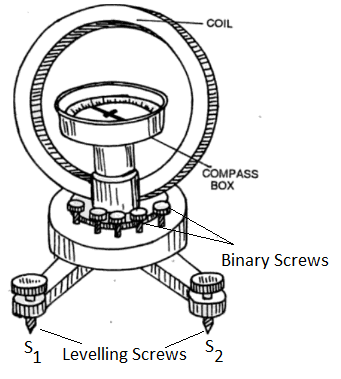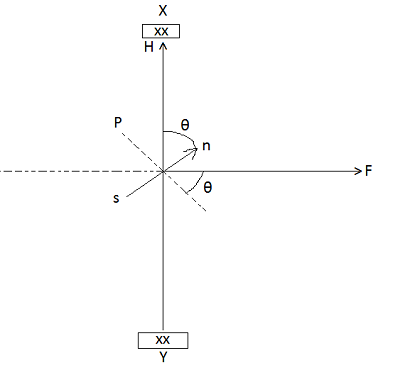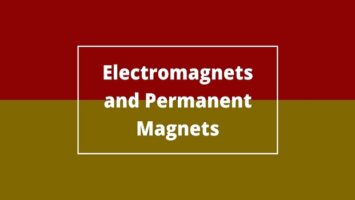Table of Contents
What is Tangent Galvanometer?
It is an instrument which can detect/measure very small electric currents. It is also called a moving magnet galvanometer.

Principle:

Construction:
It consists of a horizontal turntable T, having levelling screws. A wooden frame having a coil is mounted on the turntable in the vertical position. The coils have different turns (say 2, 50, 500 etc). One end of each coil is connected to common terminal O and the other ends of each coil are connected to independent terminals.
A circular compass box is mounted at the centre of the coil. It consists of an aluminium pointer and a magnetic needle fixed at right angles to each other. Both aluminium pointer and magnetic needle are free to move over a circular scale divided into four quadrants of 0° to 90° each. A plane mirror is fixed at the base of the compass box to remove errors due to parallax.
Setting:
- Levelling- Levelling screws are adjusted such that the wooden frame is exactly vertical and the turntable is exactly horizontal. The needle is free to move.
- Setting in Magnetic Meridian- Vertical frame is rotated till plane of frame lies exactly parallel to the axis of the magnetic needle. Now the frame lies in the magnetic meridian.
- Setting of Pointer- Turn the compass box such that pointer comes on 0-0 line of the scale.
Working and Theory:
Allow the current I to flow through the galvanometer. Due to this, magnetic field B is produced at the centre of the coil which is given by-
| B = µ0nI/2r ……….(i) |
Where ‘r’ is the radius of the coil.

| According to tangent law, B = H tan θ ……….(ii) From (i) and (ii), we have ⇒ µ0nI/2r = H tan θ Put µ0n/2r = G = Galvanometer Constant ⇒ GI = H tan θ ⇒ I = (H/G) tan θ Put H/G = K = Reduction factor, It is measured in ampere. ⇒ I = K . tan θ |









Comments (No)